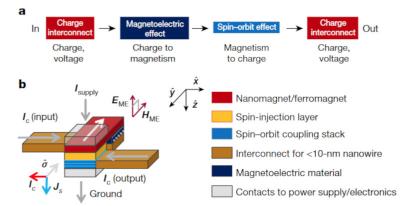The best of 2018 - top Spintronics stories
As 2018 is coming to an end, it is nice to take a look at the year that passed with its interesting spintronics related research activities and advances.
Here are the top 10 stories posted on Spintronics-Info in 2018, ranked by popularity (i.e. how many people read the story):
- New video introduces the spintronics research performed at the University of Tohoku (Mar 5)
- Video lecture - Spin Conversion Phenomena in Spintronics (Apr 8)
- Zero-Field Switching effect discovered in cobalt-iron-boron (Mar 21)
- Researchers develop a magnons-based spin transistor (Mar 2)
- Researchers discover a metallic antiferromagnet with a large magneto-optic Kerr effect (Jan 30)
- Introduction to perovskite materials (Mar 28)
- Researchers develop a Magnon Spin Valve (Mar 18)
- Researchers develop an all-electric method to measure the spin texture of topological insulators (Apr 27)
- Ohio State University's Prof. Kawakami discusses spintronics in 2D materials (Jun 10)
- Researchers manage to connect magnetic porphyrin molecules to graphene nanoribbons (Feb 19)

